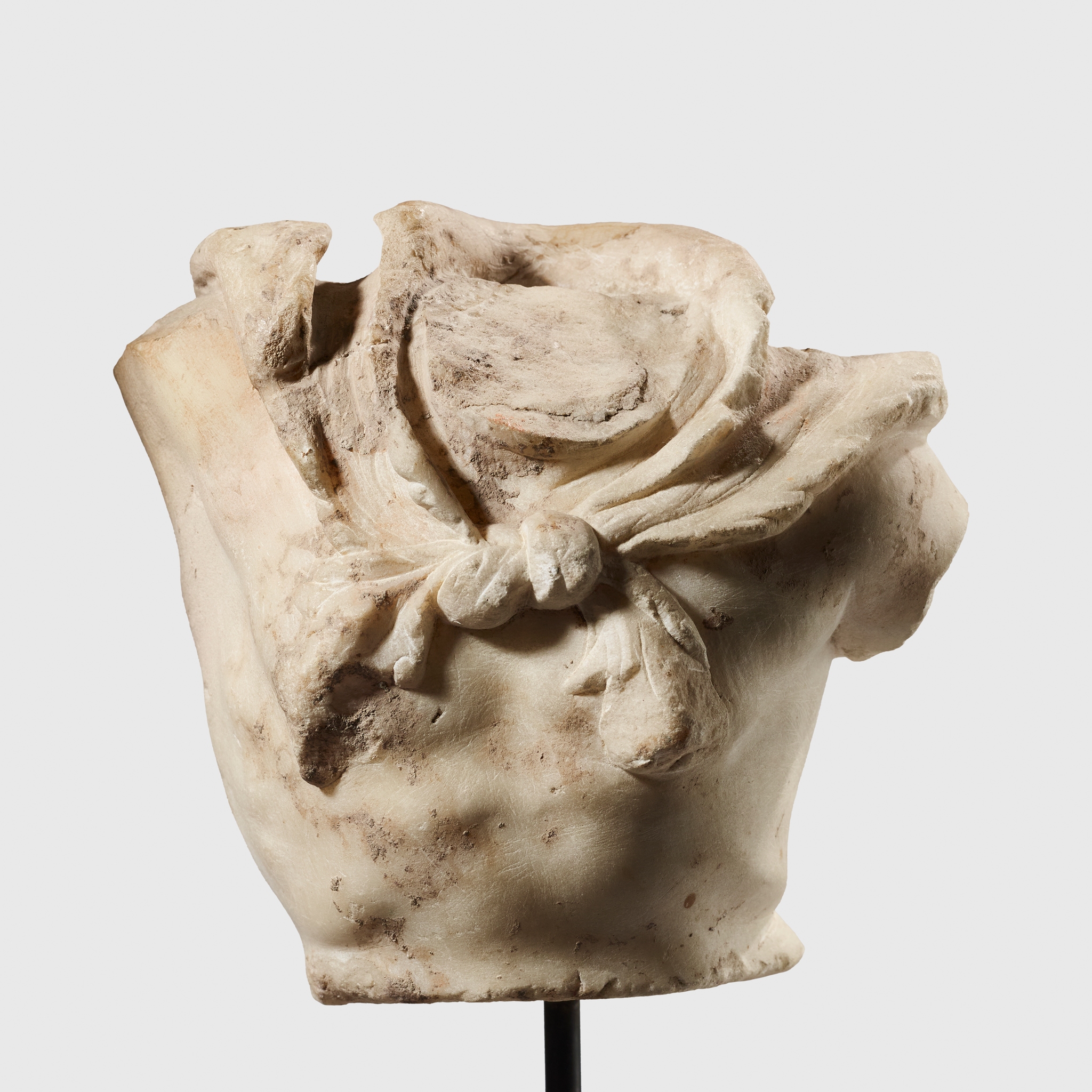ROMAN MARBLE TORSO OF HERAKLES
EUROPE, C. 2ND CENTURY A.D.
Estimate: £4,000 - £6,000
Auction: 13 March 2025 from 13:00 GMT
Description
carved marble, muscular physique, the body angled, Nemean lion-skin cape tied at the paws above his pectorals, raised on a bespoke mount
Dimensions
16.5cm tall
Provenance
Sevadjian Collection, Paris, thence by descent
Gifted to the present owner by in 1980's by Haig Sevadjian, thence by descent
Footnote
Hercules is the emblematic hero of Greco-Roman mythology, embodying classical conceptions of ideal masculinity, strength and perseverance. As such, the hero finds himself as one of the most reproduced subjects in both Greek and Roman art across varying media. Bronze and marble sculptors favoured Hercules particularly as he provided a ripe opportunity to depict the idealised male form in all its muscular glory. The present example, dating to the Roman Imperial period, finds the model for its dynamic musculature from a 4th century B.C. example, colloquially called the Copenhagen/Dresden Herakles, thought to have been created by a follower of Polykleitos around 360 B.C. (see nos. 667 and 668 in J. Boardman, "Herakles," in LIMC, vol. IV). The addition of the Nemean lion-skin cape tied at the paws above his pectorals, finds a parallel in a slightly later sculptural type created around 325-320 B.C., exemplified in an example at the Metropolitan Museum of Art (op. cit., no. 465).

